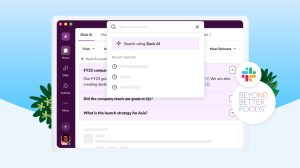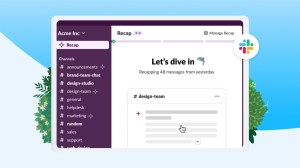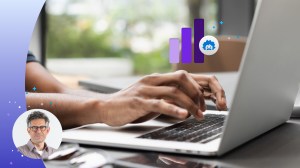Digital Disruption in 2020: AI, Wearables, Blockchain, and Beyond



What is digital disruption? How artificial intelligence (AI), wearables, and blockchain are changing how we work and interact.

Jonathan Miranda
We’re in a big moment of change. Increasingly, we’re turning to machines to help us make important decisions. Digital disruption — or the impact of technology on how we work, live, and interact — is transforming the world. Artificial intelligence (AI) and blockchain, arguably the two least understood concepts in the technology world, are at the heart of the change we’re experiencing. There’s a tidal wave of change in our future, but with today’s breakneck pace of change, businesses must focus on the near future.
As a strategist and futurist, I find it most productive to focus on the next two to three years, not the next five to 15. Trends in technology and customer preferences can change so fast that long-term planning is no longer effective. Digital disruption is changing how markets are created, as we’ve seen again and again as startups shake up industries and attract customers by providing better experiences. [Click to Tweet]
Consider the mattress industry. When you walk into most of the thousands of mattress stores in the U.S., you’ll see a cluster of empty beds in a cold showroom. You’ll usually only find one person minding the whole place. Despite this depressingly uninspiring experience, you’re expected to pay thousands of dollars for a mattress. No wonder startups like Casper are disrupting the industry. Casper started selling mattresses direct to consumers and recently created a space where people can take a 45-minute nap in a sleeping pod for $25 — pajamas, masks, and toiletries included. Called The Dreamery, the nap store aims to create awareness about the Casper brand by letting customers try its mattresses and products, while delivering an engaging customer experience.
Understanding AI's disruptive impact
When talking about AI, people usually think of robots taking over our jobs. But the reality is that we are a long way from human-level AI systems that can tackle every problem and put us all out of jobs.
What is going on right now is that we are developing machine learning, which, in terms of AI, is basically baby steps. For example, as an analogy, if I give you 5,000 pictures of a cat and then one more picture, can you tell me whether or not it’s a cat? That’s what machine learning is about. We feed data into a computer system and develop its ability to distinguish images — such as a cat from a dog. It’s the equivalent of asking a question to a stadium full of toddlers and hoping the consensus is correct.
Even at this early stage in its development, AI is already changing the world — from enabling us to automatically schedule our meetings to making it possible to travel in self-driving cars.
In 2020, we can expect AI to play a role in helping people make better decisions. Think of how a doctor chooses a treatment, a bank officer decides on a loan application, or a judge determines the length of a prison sentence. These are decisions that can be influenced by certain biases, and AI can help these professionals make unbiased judgments by providing them with the right data.
These are decisions that can be influenced by certain biases, and AI can help these professionals make unbiased judgments by providing them with the right data.
I don’t believe we’re going to have a ‘robot doctor’ in the next 50 or even 100 years. But we certainly will have doctors who give expert opinions based on data that AI helps them parse. As AI enhances some of our functions by processing vast amounts of data, it will impact industries where decisions play a key role, such as healthcare and finance.
How blockchain is driving disruption
Blockchain is another major driver of digital disruption. Many people think of cryptocurrencies like Bitcoin when they hear the word “blockchain,” because that’s one of the biggest stories out there. But blockchain is a core technology, just like SQL (structured query language) and databases or cloud computing.
It is about creating ‘distributed ledgers’, effectively open environments so that companies and customers can work together and freely share information.
This can create a lot of interesting synergies. For example, a reward program typically allows you to earn points and use them with the same company. With blockchain, you can use those points at any company within an ecosystem; for instance, you can buy groceries, rent a movie, or book a hotel room. That’s more valuable.
Blockchain also enables us to share data securely and privately. For example, every time we see a doctor or go to a new hospital, accessing or sharing our medical records can be a nightmare. With blockchain, we can walk into a hospital in a different country and quickly give the staff access to our records and know exactly when it is used. We can control who has access to our data and know who’s using it.
With blockchain, we can walk into a hospital in a different country and quickly give the staff access to our records and know exactly when it is used. We can control who has access to our data and know who’s using it.
Taking wearables to the next level
It’s amazing how quickly wearables went from ‘new’ to ‘normal.’ The Apple Watch has been on the market for about five years, and by some estimates shipped out 6.8 million units in Q3 of 2019 alone. Today companies are even making fitness trackers for four-year-olds. Other wearables such as smart glasses and various health devices also have the potential to have a major impact.
As the new 20s take hold, it’s going to be more and more commonplace to wear technology on our bodies. Google Glass, for example, is finding purpose despite not panning out when it first launched in 2013.
I have two boys who are autistic, and they are part of a project called Autism Glass being run by Stanford University and Google. My kids get to wear Google Glasses that recognize facial expressions and tell them the name and emotion of the person they’re looking at.
[With Autism Glass], my kids get to wear Google Glasses that recognize facial expressions and tell them the name and emotion of the person they’re looking at.
I can never explain clearly enough how much of a life changer those glasses are.
My kids struggle to understand human emotions, so for them to look at somebody and be able to tell that they’re happy, sad, or angry is very valuable. A technology that was an industry failure is now worth its weight in gold for families like mine all from adding in machine learning.
Adapting to digital disruption
In my work guiding business leaders around the world, I have seen common themes among companies that thrive through disruption or are disruptors themselves. They embrace change and set bold strategies. They keep an eye on future trends in technology and, importantly, changing customer wants and needs. Generally, they are not afraid to break the rules of the game. They’re quick to adapt to changing customer expectations, they’re willing to break things in the pursuit of a big win, and they build a culture of innovation.
Respond to new customer expectations
Customers are increasingly cognizant of the power of their personal data. Thanks to data protection and privacy rules, customers understand the value of their information and want to know what organizations are doing with it. They want to make sure their data is being used properly and that they are doing business with companies they can trust.
At the same time, customer expectations increase every time they have an exceptional experience. After sampling Casper’s Dreamery, how many people will be satisfied with the typical, cavernous mattress store again?
Look at Apple stores, for example. Instead of having products everywhere, they have experts ready to help or give advice. They have open areas where customers can play with gadgets and converse with others in the community. That makes for a great experience.
Be willing to fail before you succeed
One of the best ways business leaders can prepare their organizations for disruption is to celebrate failure. For people to innovate, you must let them make mistakes. If you don’t tolerate mistakes or you punish people who make them, they will leave or be reluctant to try new things.
Amazon is a great example of a company that has developed a culture where people are willing to try. When the company built the Fire Phone, a smartphone, in 2014, it failed to take off, sending more than $100 million down the drain. But Amazon celebrated the failure and flew its employees to Hawaii. CEO Jeff Bezos commended people for being able to build a phone. After all, Amazon was a retail company and not a phone maker. At the same time, he encouraged them to keep trying and innovating. Amazon used its phone developers and its learnings from the failure to speed up the development of its smart speaker Echo and virtual assistant Alexa. Just months after launching the Fire Phone, Amazon debuted Echo, powered by Alexa. Now, Alexa devices account for 70% of the American smart speaker market, outdoing Google Home and Apple HomePod.
Empower employees to innovate
Another key to growing in an age of disruption is having innovation at the core of an organization. To be able to make major shifts and pivots, a company must have agility and the ability to innovate. The biotechnology and chemical giant DuPont offers a good example. It started as a gunpowder manufacturer and has constantly innovated to expand its business interests. Its businesses now span the industrial and transportation; electronics and imaging; nutrition and biosciences; and safety and construction sectors. To achieve this kind of success, a company must have a culture of innovation and understand the value it wants to provide.
And to power a culture of innovation, employee education will become ever more crucial in the years ahead. According to the World Economic Forum, employees will need an extra 101 days of retraining and upskilling by 2022. That’s because every day, there are new competitors entering markets. Every day, new products, capabilities, and technologies are being rolled out.
In a moment of disruption, people and businesses must prepare for the next set of technologies. And right now, we are in that moment where we need to adapt and understand the future — which means that we must focus on educating ourselves.
Our future is bright — you just need to know where and how to look at it.
For more Salesforce perspectives, stories, and news, follow @SalesforceNews on Twitter.















